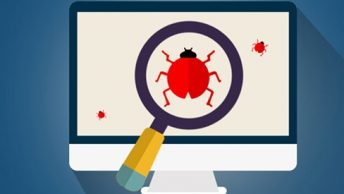Introduction
In today’s digital world, software development plays a pivotal role in the growth and achieving new heights for any business. The software trends are changing every single day owing to the increasing demands for new technologies. From education to e-commerce, every field is following different practices of software developments and yet stays updated with the latest trends. Even though the COVID-19 pandemic has brought things to a halt, businesses are yet seeking new technologies for their expansion and full-stack development is one of those technologies.
Did you know that IT spending on enterprise software in the year 2021 is expected to amount to around 517 billion U.S. dollars worldwide, a growth of 10.8% from the previous year?
Be it web application development or mobile application development, the latest trends always have a key role in elevating business for entrepreneurs. They no longer need to hire specialized front-end and back-end developers for the work. This helps them to save up some money and improve productivity at the workplace.
Transformation of Full-Stack Development
The major reason behind the evolution in every software field is the innovations introduced in them. Long gone are the days when people used models like LAMP stack, LEMP stack, WAMP stack, MEAN stack, MERN stack, etc. for software development. Enterprises today have not limited their development practices to HTTP, scripting languages, OS, and Databases. The new trends and advanced technologies have allowed them to opt for HTML, JavaScript, CSS, and more for their business.

So, let’s have a look at some of these top trends in Full-Stack Development that are going to revolutionize the software sphere in 2021.
- Low-Code and No-Code Development
Could there be anything more pleasing and satisfying than software development with minimal coding? Definitely not. You no longer need to be a developer or learn development thoroughly for developing web and mobile applications. The drag-and-drop feature of low-code development allows one to create wonders. Low-code and no-code development platforms will never replace the traditional method of development, but citizen developers can now easily collaborate with IT departments and make use of such platforms to develop various business applications. The complexities thus involved in development are thereby avoided by using low-code and no-code development platforms. Full-stack developers are further learning to integrate advanced technologies like AI, IoT, and Blockchain to uplift the development options available through low-code development. And this will allow the customers to understand the code easily and also customize the applications as per the required configurations. While no-code development platforms enable non-programmers to develop software solutions using the graphic user interface (GUI), instead of writing the entire code for the same. In this fast-paced digital era wherein there is a demand for creating software applications in a lesser amount of time, such development platforms have become the need of the hour.
- Artificial Intelligence (AI)

Any technology in today’s tech-savvy era is incomplete without the influence of Artificial Intelligence (AI) and Machine Learning (ML) models. From developing chatbots, enhancing products, and encoding human behavior in machines, AI owing to its power of automation has achieved it all. And with the integration of Big Data, UI Design and Software Engineering, etc. artificial intelligence is bound to reach great heights in the software landscape.
Many industry verticals such as healthcare, automotive, retails, and many more have already adopted AI tools and solutions to expand their business in terms of user expectancy, design experience, and knowledge engineering. With a tech-stack including Python, PHP, MySQL, Oracle, Hadoop, Django, etc. full-stack developers can develop the best AI solutions as per the business needs.
- Language Trends
For full-stack development, programming languages, libraries, frameworks and other tools used for application development matters the most. The ultimate goal is to simplify the development tasks and meet the converging needs of developing hybrid applications. It is extremely important to choose a particular language and framework while developing as it directly affects the outcome of the project in the end.
As per recent statistics, Python is considered to be the fastest-growing programming language.
According to a Stack Overflow survey, Node.js and AngularJS are the most widely used development frameworks. A majority of full-stack developers use JavaScript because of the ease with which they can code web applications, and great adaptability for hybrid applications as well. Other languages in the trending list include React, Drupal, .NET core, and more. An interesting feature about Drupal is that you get multilingual support by default, and developers don’t need to invest more time while website development.
- Blockchain Technology
Finance, banking transactions, ERPs, and many industries choose blockchain technology for its commendable features like security, transparency, speed, and distribution. The technology offers advanced encryptions for confidential data for businesses looking to secure their data and records. Blockchain development has gained tremendous attention in recent years and its valuation will be skyrocketed in the upcoming years. With its application in cryptocurrency and other powerful networks, blockchain has surely caught the attention of the IT sector.
Blockchain adoption statistics show that half a percent of the human population is currently using blockchain technology, or somewhere around 40 million people.
The history of financial transactions is becoming even more transparent with the implementation of blockchain technology. It also supports high-speed millisecond transactions and is far more secure than centralized systems. The technology streamlines the entire trade process and provides an automated trade lifecycle wherein all parties involved have every data and information about the trade. With decentralized apps, web3 architecture, and other tools, full-stack developers can easily create a blockchain-chain-oriented application for your business.
- Mixed Reality
The mixed reality is a diversified interaction between humans, computers, other environments and opens up possibilities beyond our restricted imagination. Further, the advancements in graphics processing power, visualization technology, computer vision, etc. have accelerated the growth and process of developing state-of-the-art applications for businesses.

The market for mixed reality was valued at only $553.27 million in 2020, representing a lower growth rate than AR and VR. However, this space should reach a value of around $5811.09 by 2026, with a CAGR of 47.8%.
The supreme combination of the twin technologies of augmented reality (AR) and virtual reality (VR) has upscaled all the possible variations and compositions of real and virtual objects. This exemplary concept of blending computer vision and human vision is the future of development and will create an era of its own in the upcoming years.
Wrapping Up
The advancements in technology bring in ample opportunities for business and also challenges with them! By now, we have experienced numerous full-stack development trends that have helped businesses to flourish and these new trends too will follow similar steps while progressing. And as they say, “Change is the only constant”, the latest trends in software development will follow a continuous change and in turn drive the full-stack development too. The year 2021 sure brings in a lot of expectations for software-based businesses and developers.





